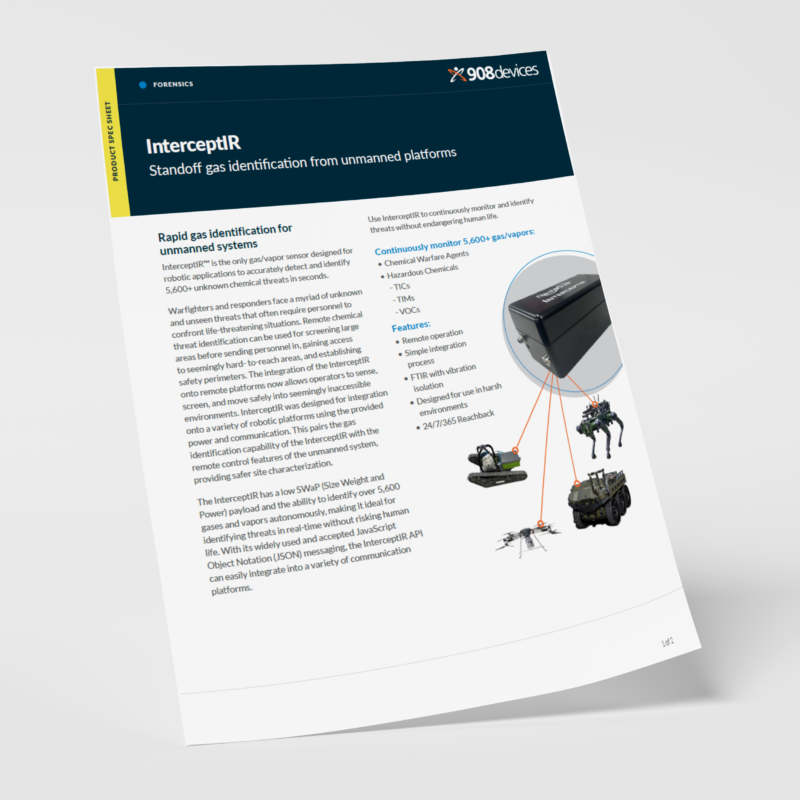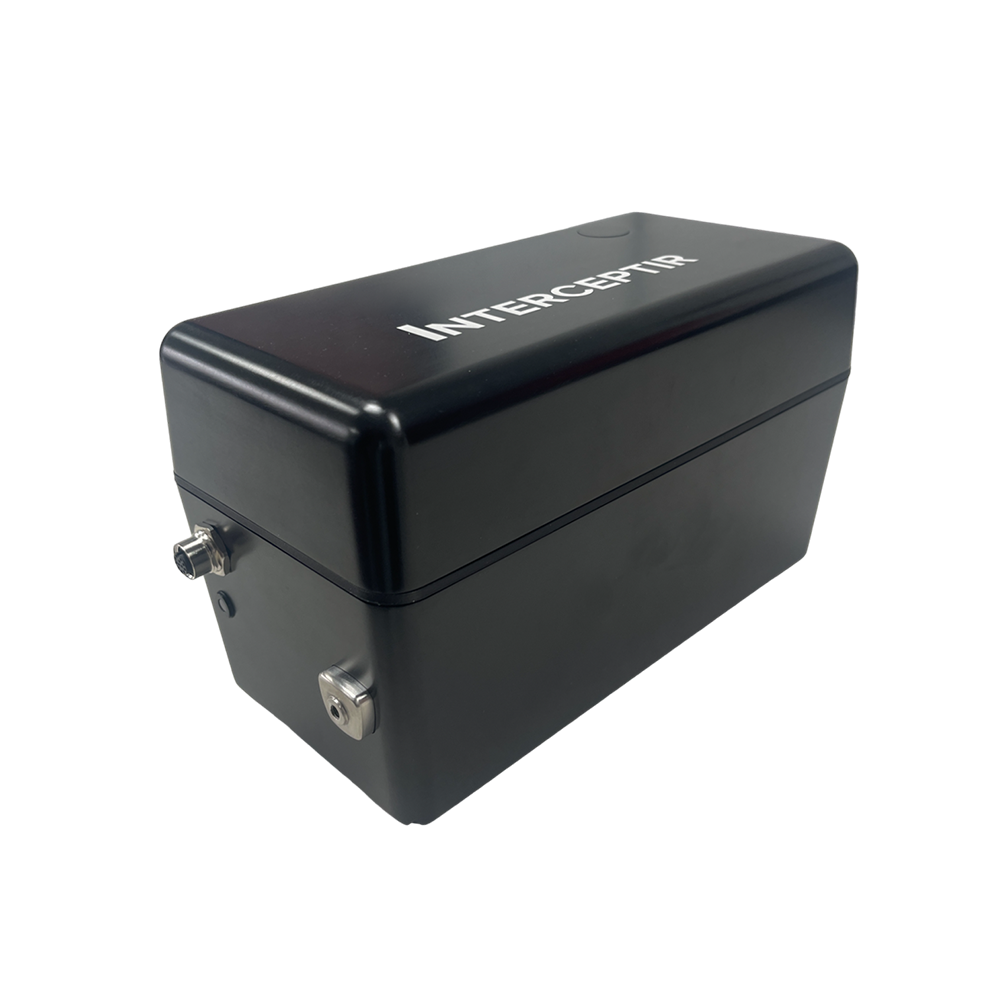InterceptIR Specification Sheet
Learn about the features and performance of InterceptIR, rapid gas identifier for unmanned systems.

Rapid gas identification for unmanned systems
InterceptIR™ is the only gas/vapor sensor designed for robotic applications to accurately detect and identify 5,600+ unknown chemical threats in seconds.
Warfighters and responders face a myriad of unknown and unseen threats that often require personnel to confront life-threatening situations. Remote chemical threat identification can be used for screening large areas before sending personnel in, gaining access to seemingly hard- to-reach areas, and establishing safety perimeters. The integration of the InterceptIR onto remote platforms now allows operators to sense, screen, and move safely into seemingly inaccessible environments. InterceptIR was designed for integration onto a variety of robotic platforms using the provided power and communication. This pairs the gas identification capability of the InterceptIR with the remote control features of the unmanned system, providing safer site characterization.
The InterceptIR has a low SWaP (Size Weight and Power) payload and the ability to identify over 5,600 gases and vapors autonomously, making it ideal for identifying threats in real-time without risking human life. With its widely used and accepted JavaScript Object Notation (JSON) messaging, the InterceptIR API can easily integrate into a variety of communication platforms.
Use InterceptIR to continuously monitor and identify threats without endangering human life.
Continuously monitor 5,600+ gas/vapors:
- Chemical Warfare Agents
- Hazardous Chemicals
- TICs
- TIMs
- VOCs
Features:
- Remote operation
- Simple integration
process - FTIR with vibration
isolation - Designed for use in harsh
environments - 24/7/365 Reachback


| Specifications | |
|---|---|
| Technology: | FTIR (Fourier Transform Infrared Spectroscopy) |
| Sample Type: | Gases |
| Libraries: | 5,600+ Gases & Vapors TICs, CWAs, VOCs, WMDs Industrial Chemicals, Solvents, Hydrocarbons |
| Identification Time: | 4 second detection < 60 second identification |
| Sample Mode: | Continuous (Survey); Point (Grab-sample) |
| Limit of Identification: | 10 ppm to 50 ppm |
| Operating Time: | 0 to 50° C (32 to 122° F) |
| Humidity: | 0-95% non-condensing |
| Power: | 15-24V DC |
| Gas Measurement: | 2.0 meters, multi-pass gas cell, 37ml volume |
| Size: | 5.2” × 9.2” × 6.3” (13.2 cm x 23.37 cm x 16 cm) |
| Weight: | ~ 4 lbs. (1.81 kgs) in standard enclosure |
| Spectral Range: | 4000 to 650 CM-1 |
| Spectral Resolution: | 4 cm-1 |
| Connections: | USB, Wi-Fi |
| Sample Pump: | Active, 1 l/min |
| Vibration Isolation: | Isolated from 5 to 35 Hz (Characteristic of solid wheeled vehicles) |
| API Connectivity: | JSON protocol for data integration |
| Ruggedness: | Dust; Waterproof/Resistant; IP54 |
| Decon: | Spray or wipe-down with bleach or detergent |
| Warranty/Support: | 1 Year Warranty 24/7/365 Support Reachback with data analysis |
Performance:
- Automated atmospheric compensation
- 4 second response time
- ID up to 6 components simultaneously
- Expandable identification library
- Part-per-million sensitivity
Connectivity:
- Hardwired (USB serial)
- Optional cloud-based TeamLeader app
- JSON protocol for robotics integration
- Integration with ATAK (in development)
Missions:
- Explosive environments
- Environments posing a risk to human life
- Booby-trapped facilities
- Military operations
- Impassable terrain
- Aerial surveillance
Field Deployment:
- Control from remote locations
- Autonomous operation
- Extreme weather conditions (IP-54)
- Shock and vibration resistance
Subscribe to Our Communications
Signup to receive new product updates, technical tips and more.